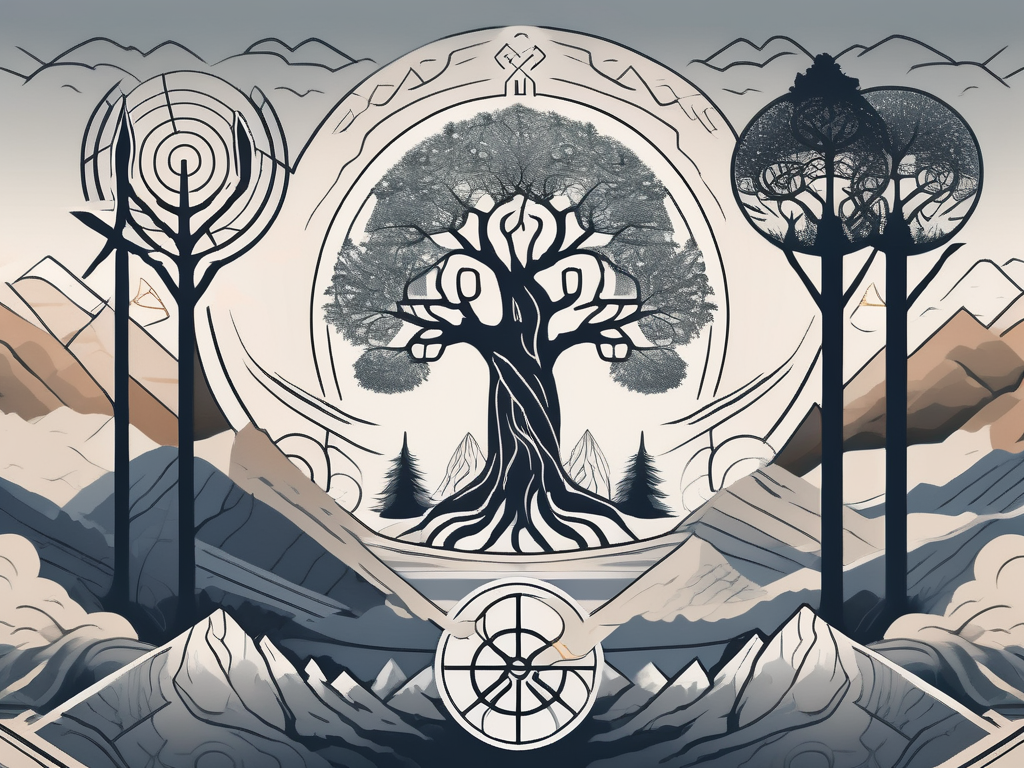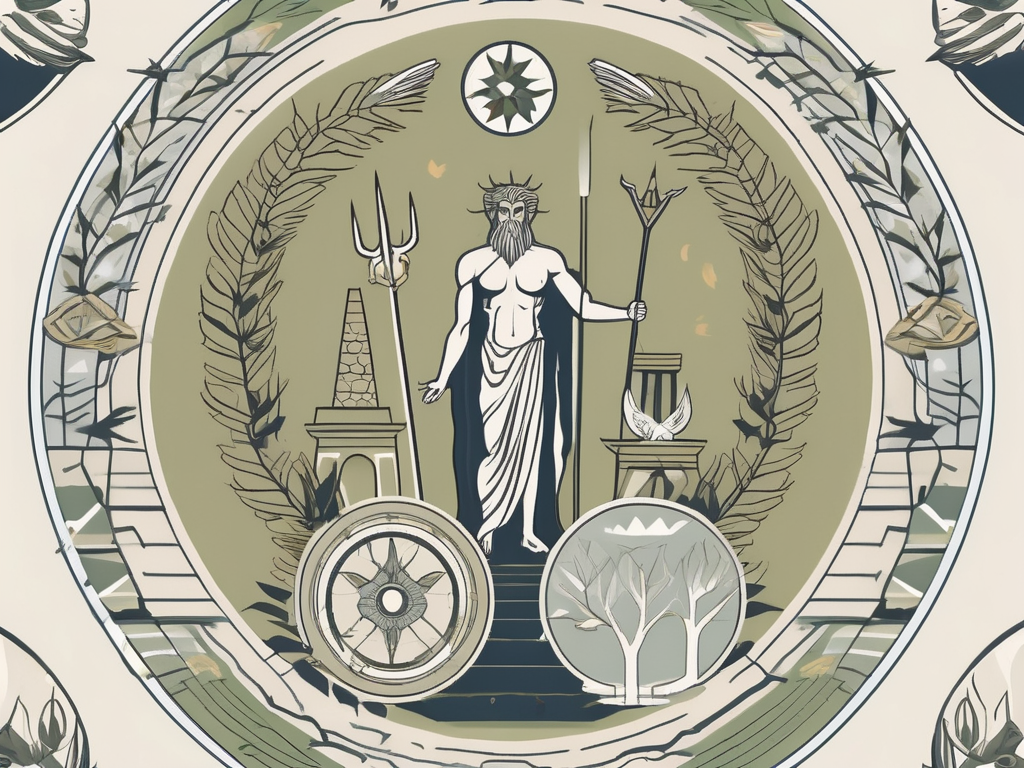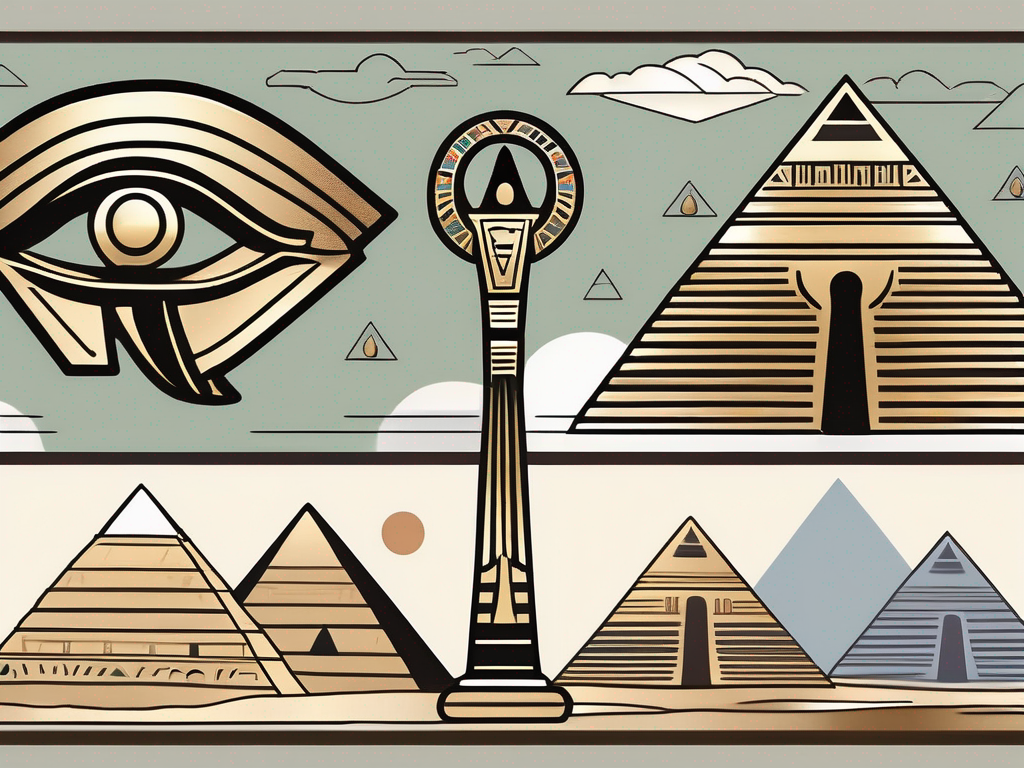In the vast realm of ancient Egyptian mythology, there exists a fascinating and enigmatic group of deities known as the Tree Goddesses. These divine beings, associated with the sacredness of trees, played a significant role in Egyptian worship and belief systems. Let’s embark on a journey to uncover the deep connection between these mystifying figures and the revered gods of ancient Egypt.
Understanding the Concept of Tree Goddesses
Before delving into the intricate world of Egyptian mythology, it is essential to grasp the concept of Tree Goddesses and their symbolism. Trees have long been regarded as powerful symbols of life and regeneration in many ancient cultures. In the Egyptian pantheon, these tree deities represented various aspects of nature, fertility, and spirituality.
The unique link between humans and trees was deeply ingrained in the beliefs and practices of ancient Egyptians. The Tree Goddesses served as intermediaries between the mortal realm and the divine realm, guiding and nurturing the earthly inhabitants.
One of the most prominent Tree Goddesses in Egyptian mythology was Hathor. She was often depicted as a cow or as a woman with cow horns, symbolizing her association with fertility and motherhood. Hathor was believed to be the mother of the pharaohs and was revered as the goddess of love, beauty, and joy. Her connection to trees was manifested through the sycamore fig tree, which was considered sacred to her. The sycamore fig tree was believed to be the Tree of Life, providing sustenance and protection to the people.
The Symbolism of Trees in Ancient Cultures
Trees held immense significance in the ancient world, as they provided shelter, food, and medicine. Beyond their practical uses, trees also symbolized the cycle of life, death, and rebirth. In various mythologies, the concept of the World Tree emerged, connecting different realms of existence.
Ancient cultures often associated specific trees with particular deities or divine forces. For instance, the oak tree symbolized strength and endurance in Celtic mythology, while the ash tree represented the cosmic axis in Norse mythology.
In Egyptian mythology, the acacia tree held great importance. It was associated with the goddess Isis, who was revered as the mother goddess and the protector of the pharaoh. The acacia tree was believed to be a symbol of resurrection and eternal life. Its wood was used in the construction of sacred temples and coffins, signifying the connection between the divine and the mortal.
The Role of Goddesses in Egyptian Mythology
Egyptian mythology featured a rich cast of goddesses, who played powerful roles in shaping the cosmology and religious practices of the civilization. These goddesses embodied divine feminine qualities, representing aspects such as fertility, motherhood, wisdom, and protection.
Isis, Hathor, and Nut were among the most revered Egyptian goddesses, each connected to a specific type of sacred tree. These tree goddesses had a profound influence on the lives of the ancient Egyptians, permeating their spiritual and cultural practices.
Isis, the goddess of magic and wisdom, was associated with the persea tree. This tree was believed to have grown from the heart of Osiris, Isis’ husband and the god of the afterlife. The persea tree symbolized resurrection and was often depicted in funerary art and rituals.
Nut, the goddess of the sky, was connected to the palm tree. The palm tree represented fertility and abundance, as it provided dates, a staple food in ancient Egypt. Nut was often depicted as a woman arched over the earth, her body symbolizing the sky, and her fingers and toes representing the palm branches.
These Tree Goddesses played a vital role in the religious ceremonies and rituals of ancient Egypt. They were worshipped and revered, their presence felt in every aspect of daily life. The symbolism of trees and their association with these powerful goddesses brought a sense of harmony and balance to the Egyptian civilization, reminding the people of their connection to the natural world and the divine.
The Intersection of Tree Worship and Egyptian Deities
The veneration of trees and the worship of gods were intricately intertwined in ancient Egypt. The sacred sycamore and the divine palm were two prominent trees associated with eminent Egyptian deities. Let’s explore the symbiotic relationship between these celestial beings and the cherished trees.
The Sacred Sycamore: Isis and Hathor
Isis, the goddess of motherhood and magic, was closely linked to the sycamore tree. This majestic tree, believed to be the Tree of Life, stood at the gateways between life and death. It was believed that the sycamore tree provided a safe passage to the realm of the afterlife for the deceased.
Legend has it that when Osiris, the god of the afterlife, was slain by his brother Seth, his body was hidden in a sycamore tree. Isis, his devoted wife, searched tirelessly for his remains and eventually found him within the sacred sycamore. This tree became a symbol of resurrection and rebirth, representing the eternal cycle of life and death.
Hathor, the nurturing goddess of love and joy, was also associated with the sycamore tree. She was often depicted as a protective celestial cow emerging from the foliage of the sycamore, offering comfort and solace to the faithful. The sycamore tree, with its broad branches and abundant shade, became a sanctuary for those seeking Hathor’s divine blessings.
Worshippers would gather beneath the sycamore tree, seeking Hathor’s guidance and protection. They believed that the tree’s connection to the goddess allowed them to communicate with her directly, bridging the gap between the mortal and divine realms.
The Divine Palm: Nut and the Sky
Nut, the sky goddess, had a profound connection with the palm tree, revered for its beauty and resilience. Nut was often portrayed as a celestial figure arching over the earth, her body adorned with palm fronds.
This imagery symbolized Nut’s role in creating the protective sky, under which all life thrived. The palm tree, with its tall and slender silhouette, mirrored the ethereal nature of Nut and her celestial abode. The palm fronds that adorned Nut’s body were believed to represent the life-giving rays of the sun, which she generously bestowed upon the earth.
The palm tree held great significance in Egyptian culture, not only as a representation of Nut but also as a symbol of fertility and abundance. Its ability to withstand harsh desert conditions and still bear fruit made it a powerful symbol of resilience and renewal.
During religious ceremonies, worshippers would often carry palm fronds as a gesture of devotion to Nut and as a means of seeking her blessings. The palm fronds were believed to possess the divine energy of the goddess, and by holding them, the worshippers felt a profound connection to the celestial realm.
In conclusion, the sacred sycamore and the divine palm played integral roles in the religious practices of ancient Egypt. These trees served as conduits between the mortal and divine realms, allowing worshippers to connect with the gods and receive their blessings. The veneration of these trees not only honored the deities but also celebrated the natural world and its profound influence on human spirituality.
The Influence of Tree Goddesses on Egyptian Society
As with any aspect of mythology, the Tree Goddesses left an indelible mark on Egyptian society. Their worship and reverence shaped the daily lives, rituals, and artistic expressions of the ancient Egyptians.
Rituals and Ceremonies Involving Tree Goddesses
The worship of the Tree Goddesses entailed numerous rituals and ceremonies, often held in sacred groves or near specific trees associated with these deities. Devotees offered prayers, performed dances, and made offerings to seek the favor and blessings of the goddesses.
These rituals served as a form of connection between the mortal realm and the divine, fostering a sense of unity and harmony with nature. They reinforced the importance of nurturing the natural world around them, just as the Tree Goddesses nurtured the spiritual and physical well-being of the people.
The Impact on Art and Architecture
The influence of the Tree Goddesses extended beyond religious practices and seeped into the artistic expressions of ancient Egypt. The goddesses’ images were incorporated into temple murals, statues, and hieroglyphs, depicting their association with sacred trees.
Architectural marvels, such as the magnificent temples and palaces, incorporated elements inspired by trees and nature. These structures served as physical embodiments of the intertwined relationship between the divine and the mortal realms.
The Legacy of Egyptian Tree Goddesses
The legacy of the Tree Goddesses extends far beyond the ancient world. Their significance continues to be interpreted, honored, and celebrated in modern times, showcasing the enduring influence of Egyptian mythology.
Modern Interpretations and Beliefs
Contemporary interpretations of Egyptian mythology often emphasize the archetypal qualities embodied by the Tree Goddesses. Their attributes of nurturing, wisdom, and connection to nature inspire individuals to foster a deeper understanding of themselves and the world around them.
Many believe that the Tree Goddesses serve as powerful symbols of the feminine divine and encourage the exploration of personal growth, spiritual enlightenment, and the interconnectedness of all life.
The Tree Goddesses in Contemporary Culture and Media
The allure of the Tree Goddesses has not been lost on popular culture and various forms of media. Books, movies, and artwork continue to showcase these mythical beings, captivating audiences with their mystique and beauty.
From fantasy novels to contemporary art exhibitions, the Tree Goddesses symbolize the enduring fascination and reverence for ancient Egyptian culture and spirituality.
In conclusion, the Tree Goddesses of ancient Egypt offer a captivating glimpse into the rich tapestry of mythology and spirituality that defined the civilization. From their role in connecting the mortal realm to the divine to their impact on Egyptian society and culture, these enigmatic deities have left an indelible mark on history. As we continue to unravel the mysteries of the past, the Tree Goddesses serve as a reminder of the profound and enduring connections between humanity and the natural world.












